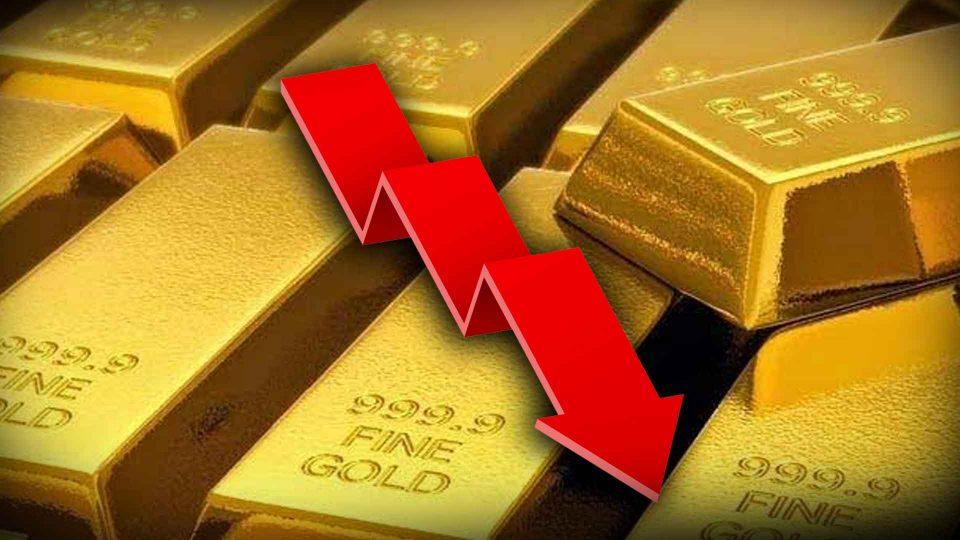The overall gold demand stood at 1,047 tonne in Q1 2017, WGC said in its ‘Gold Demand Trends’ report for Q1 2018.
Mumbai: The global gold demand fell by 7 per cent to 973 tonne during the January-March period this year as compared to the same period last year mainly due to a decline in investment demand, according to the World Gold Council (WGC).
The overall gold demand stood at 1,047 tonne in Q1 2017, WGC said in its ‘Gold Demand Trends’ report for Q1 2018.
The fall in demand was largely caused by a decline in investment demand for gold bars and gold-backed exchange traded funds (ETFs) following a subdued gold price environment, it said.
The total investment demand in the first quarter was down 27 per cent at 287 tonne, compared to 394 tonne in the corresponding quarter of 2017.
China, Germany and the US drove weakness in bar and coin investment causing a 15 per cent drop in the global demand to 254.9 tonne.
The range-bound gold price undermined investor interest in these markets, although China’s weakness was partly due to the exceptional strength in Q1 2017, WGC said.
The ETFs inflows declined by 66 per cent to 32 tonne during the quarter under review compared to 96 tonne in the same quarter last year, mainly driven by the US, where the return of volatility in the stock market made investors seek refuge in gold, it said.
“Last year, Europe led the inflows into ETF following geopolitical situations, including elections in at least three countries and BriExit and general weakness in economic conditions. Those situations are stable this year,” WGC, India, Managing Director P R Somasundaram told PTI here.
Meanwhile, the report revealed that global jewellery demand was flat at 487.7 tonne in Q1 2017, compared to 491.6 tonne in the same period last year.
The jewellery demand in China was up by 7 per cent, buoyed by holiday demand and in the US, the situation improved due to supportive economic conditions.
However, in India the demand was down 12 per cent at 87.7 tonne compared to 99.2 tonne in the first quarter of 2017, as consumers were discouraged by rising the gold prices, weakening rupee and the GST transition issues faced by the unorganised retailers.
The report said that central banks added 116.5 tonne to global official reserves in Q1 2018, compared to 82.2 tonne, which was 42 per cent higher than the previous.
This was the highest quarter one total for four years and in line with the average quarterly purchases since the first quarter of 2010 of 115 tonne.
Russia, Turkey and Kazakhstan again dominated the list of central banks buying gold, adding 91 tonne between them.
Qatar, it said, was the biggest seller, cutting reserves by 3.1 tonne.
The demand for gold in the technology sector continued to improve witnessing 4 per cent growth in the first quarter at 82.1 tonne, compared to 78.9 tonne in the same period last year.
The wireless sector was a key area of growth as 3D sensors for facial recognition were increasingly deployed in smart phones, gaming consoles, and security systems.
“Although the demand was down, we saw encouraging levels of jewelry demand in China, the US and Europe, continued growth in the technology sector and steady inflows into ETFs, albeit at a slower pace than last year,” WGC head of market intelligence, Alistair Hewitt, said.
The solid inflows into central bank reserves also highlight the ongoing relevance of gold as a strategic asset for institutional investors, he added.
Meanwhile, the report also said the total supply of gold increased by 3 per cent in the first quarter this year to 1,064 tonne, due to increased mine production and net hedging.
The mine production and recycling levels both saw fractional increases compared to Q1 2017, at 770 tonne and 288 tonne, respectively, it added.
As an independent media platform, we do not take advertisements from governments and corporate houses. It is you, our readers, who have supported us on our journey to do honest and unbiased journalism. Please contribute, so that we can continue to do the same in future.

